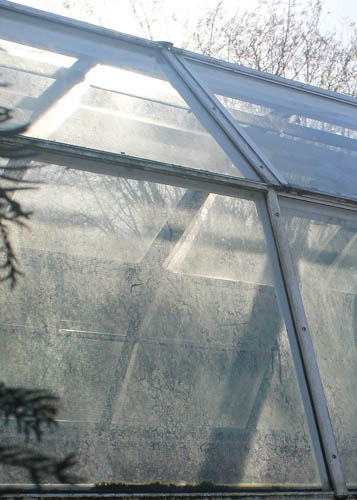
Plants like peppers, chillies and aubergines, which need a long growing season should be sown this month. If you sow them now, they will ripen but leave too late and they will not. The third week in February is ideal, mid-March is fine and the first week in April is the limit.
They need light, warm conditions and constant temperatures for germination – a propagator and supplementary lighting are ideal, although the latter is not absolutely necessary. An alternative, which also frees up space in the greenhouse is to buy young plants from the garden centre or the internet later in the year.
Soak a 10cm pot of seed or multipurpose compost using a watering can with a fine rose, using tepid water and leave it to drain for at least half an hour. Sow the seeds over the surface, six to a pot, then sprinkle a shallow layer of fine grade vermiculite over the surface. Put the pot in a propagator or airing cupboard at 18-21C (64 -70F) and three weeks, or so later they will have germinated.
Transplant when they are large enough to handle by lifting the seedlings gently by a leaf, into a 9cm pot and grow on in the greenhouse at 10-15C. Make sure that there is enough space between the pots so the seedlings don’t become elongated in search of the light. Once the pots are full of roots but not ‘pot bound’ they can be moved into their final growing position in a heated greenhouse in 25cm pots of growing bag compost or growing bags. If the greenhouse is unheated, sow later and don’t plant them out until May
It’s also time to encourage dormant tuberous begonias into growth and give them an early start. Put the tubers into seed trays and cover, with a mix of equal parts John Innes no2 and peat substitute, making sure the tuber is concave side uppermost. Water them lightly with tepid water, cover them with a sheet of newspaper at around 16-18C (60-65 deg F). When the first shoots appear, remove the newspaper and keep them in the shade. If you can’t provide heat, wait until late April and start them off in a cool greenhouse.
Now’s the time to propagate your dahlias and give them an early start.
Encourage them back into growth by putting the tubers into trays of peat free multipurpose compost and put them in a warm, frost free, greenhouse. When the new shoots are about 7.5 -10 cm long, cut them off as near to the base as possible, with a sharp knife (a craft knife is perfect). Remove the lowest pair of leaves then make a clean, horizontal cut, just below the joint from where they were growing. A clean ceramic tile is an ideal cutting surface. Dip the base in hormone rooting powder, knock off the excess and insert the cuttings 2.5cm deep into peat free cutting compost and label. Water with tepid water, keep the compost moist and put the pot in a propagator at 18C, in bright light. They will take 3-4 weeks to root.
Keep sowing batches of ‘cut and come again salads’ and harvest rhubarb which is being forced in the greenhouse.
Sow sweet peas and summer annuals like Cosmos and remove faded and damaged material from your plants.
Clean the glass of your greenhouse on a warm day with a solution of soapy water and disinfectant, then rinse and polish dry. Happy Gardening










